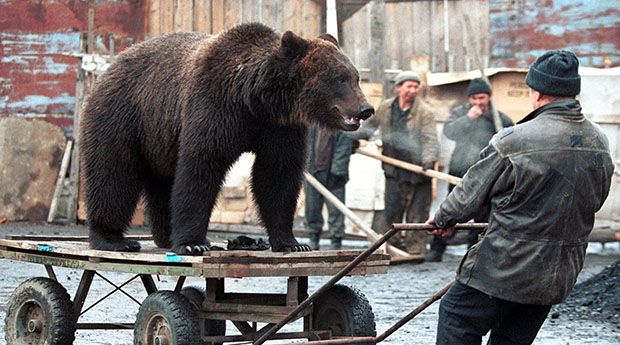Kiev and private creditors struck an unexpected deal to restructure US$18bn of the country’s debt, paving the way for a US$40bn IMF-led refinancing programme to be rolled out. But how much good will it do, given high debt, rising inflation, and conflict still raging in the east of the country?
There is, for Ukraine’s war-ravaged economy, and for the wobbly, embattled government that emerged last February to replace ousted president Viktor Yanukovych, finally some blessed relief. In the last week of August, after five months of intense and often bitter negotiations with its chief commercial creditors, Kiev emerged with some good news, having hammered out a deal to restructure US$18bn worth of its foreign debt.
The announcement was in many ways a pleasant surprise, catching seasoned observers on the hop. Many had expected talks to drag on, up to and beyond September 23, the due date for repayment on a US$500m bond. A few had taken an even more pessimistic tone, tipping discussions to stretch through the autumn months, and perhaps right up to December 15, when a landmark US$3bn sovereign bond repayment to Russia comes due.
“There was a widespread expectation that the brinkmanship would continue for months, with Western creditors blinking first,” said Katya Kocourek, a senior associate specialising in intelligence and due diligence at Stroz Friedberg in London.
Yet in the end, all were quick to applaud the outcome. An elite group of the country’s largest private sector creditors, led by US asset manager Franklin Templeton, and including the likes of BTG Pactual, TCW and T Rowe Price, agreed to an immediate 20% write-off on US$18bn of the country’s bonds.
The deal (which includes a freeze on debt repayments for four years) would enable Ukraine, the group said in a statement, to “maintain its access to capital markets and provide the stable economic platform that will help the country to restore growth”. Ukraine finance minister Natalie Jaresko said: “It’s not one side winning, it’s a win-win situation.”
All heads will now turn to the IMF, which has lent US$11bn to the country since conflict began there last year. The IMF wanted a firm deal in place before pressing ahead with an expected US$40bn financial support programme. The Fund released a statement praising the deal for having “met its requirement” that Ukraine cut its total debt to commercial creditors by US$15.3bn over four years.
The agreement will “provide the targeted external debt service relief, reduce annual gross financing needs essentially as envisaged under the programme, and place public debt on a clearly downward path”, it said.
A few obstacles remain. The agreement needs to be tabled to, and agreed by, Ukraine’s parliament, though that – most agree – is a formality. Beyond that, in mid-September, a larger set of minority bondholders were set to vote on the deal.
That too seemed a shoo-in, given that smaller creditors have been furnished with a reasonably juicy carrot. If Ukraine’s economy regains full strength sooner rather than later, creditors are guaranteed a “value recovery instrument” – essentially a bonus that will pay out if the economy expands by more than 3% a year from 2021.
Prices for Ukraine’s outstanding bonds jumped in the wake of the deal, with the sovereign’s US$2.6bn dollar bond, due July 2017, rising from 57 cents to 66 cents.
Traps and blind alleys
Yet August’s surprise deal merely marks the first footfalls on a long and arduous road lined with traps and blind alleys. Ukraine’s economic tailspin has been at least partially arrested in recent months. Inflation, which topped out at 60% earlier this year, has moderated, as has the formerly steep decline of Ukraine’s currency, the hryvna.
These though are mere grains of good news. Ukraine’s economy shrank by 17.6% on an annualised basis in the first three months, and is on track to contract by 5.5% in 2015, according to IMF projections.
Corruption remains endemic, while vast portions of the economy are hidden from enfeebled tax officials and governed by powerful oligarchs. Russian-backed troops and mercenaries remain embedded in the country’s eastern provinces, home to its prime industrial and mining facilities, now shattered and destroyed.
Euphoria over the debt restructuring, moreover, may be misplaced. Yes, by cutting a deal with commercial creditors, Ukraine emerged from the twilight far faster than those other highly indebted, ineptly run sovereigns, Greece and Argentina. But for all of the desperate spin applied by finance minister Jaresko, the deal was hardly a blowout win for Kiev, which had sought a 40% haircut on creditors’ holdings.
Nor should that figure have been a stretch. Two academics, Christoph Trebesch and Juan Cruces, previously estimated that the average haircut on sovereign debt restructuring deals since 1970 has been 37%.
Trim, not a haircut
Take a hard look at the deal, and the restructuring seems more like a trim than a haircut. The US$18bn worth of Eurobonds that it covers represents slightly less than a quarter of all public debt. Ukraine’s debt-to-GDP ratio will fall, but to 90%, from 95% before, with the nation’s total stock of debt inching down to US$67bn from US$71bn.
“The haircut is smaller than Kiev wanted,” said Liza Ermolenko, emerging Europe economist at Capital Economics. “It’s good that an agreement was reached, but that doesn’t mean it will be smooth sailing from here. It is not the best deal they could have got.”
“It’s easy to imagine Ukraine returning again and again to the negotiating table with the IMF”
A host of other challenges face the nation. How, for example, will Kiev deal with its December repayment to Moscow? Many see the US$3bn that Russian president Vladimir Putin lent the Yanukovych regime, shortly before its ouster, as a form of poison pill, designed to destabilise any attempt to drag Kiev into the West’s orbit. In the latter, Moscow failed.
Yet Russia refused to take part in restructuring negotiations led by Franklin Templeton, insisting from the outset that its bond repayment should be treated as official, rather than private debt. Will the government in Kiev simply ante up in December and repay in full a loan agreed between its two sworn enemies: the Kremlin, and its own, hated predecessors?
“At the moment, it’s very unclear what the Ukraine government is considering doing,” said Ermolenko. Perhaps Kiev does not yet know itself.
Almost certainly, some kind of deal will need to be hashed out. Russia’s sovereign debt remains low, but in every other way, the country is bleeding, wiped out economically by Western sanctions and slumping oil prices.
A likely outcome will be a full repayment of the US$3bn bond, following a full court press on the diplomatic front, led by the IMF. Kiev will surely be desperate to avoid having its name sullied by a Russian government determined to portray Ukraine’s leaders as an unreliable bunch of blow-ins.
For its part, the Kremlin has ramped up the bellicosity level ahead of December – a clear sign of the importance it attaches to the bond repayment – by insisting that Ukraine will be in technical default if it fails to repay its debts in full. Though whether international investors and ratings agencies would share Moscow’s view remains to be seen.
Even if the IMF agrees to a US$40bn financial support programme, many wonder whether Kiev will prove able to push through the sort of painful and unpopular reforms – price rises, new levies on income and corporate earnings, and a clampdown on corruption and embezzlement – required to bring the country back to health, and to keep regular Fund payments rolling in.
To this end, said Ermolenko, “it’s easy to imagine Ukraine returning again and again to the negotiating table with the IMF”.
To see the digital version of this report, please click here
To purchase printed copies or a PDF of this report, please email gloria.balbastro@thomsonreuters.com

